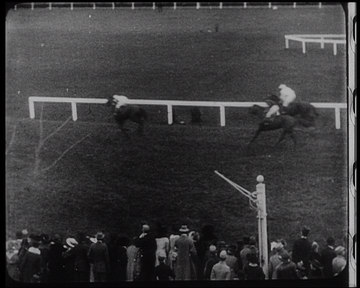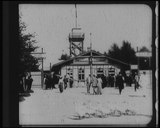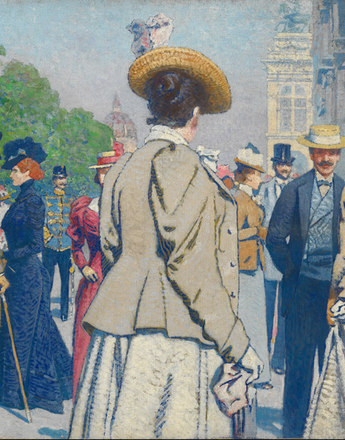Movement in films – sport, gymnastics and physical culture

The Austrian war derby 1915, film still, A 1915
Copyright: Filmarchiv Austria
Partner: Filmarchiv Austria
-

Gänsehäufel, film still, A 1911
Copyright: Filmarchiv Austria
Partner: Filmarchiv Austria
During the nineteenth century sport developed into an increasingly popular pastime, and sports became more professional at the same time. People invested increasingly in sports equipment. Whether as a leisure activity by the wealthy upper classes or a mass pursuit, the cinema captured all these sporting developments on camera.
The growing popularity of sporting competitions was connected with military interests on the one hand and with an increased emphasis on exercise and competition on the other. Women’s emancipation was also added to the mix: hiking and mountaineering, swimming, ice skating and gymnastics, cycling, tennis and skiing were all pursuits in which women took an active part.
Many sports experienced a new lease of life, especially as a means of setting the upper classes apart from the masses. This applied, for example, to tennis. When cycling was espoused by the masses and was therefore no longer fashionable enough, some cycling clubs offered their members the use of tennis courts. A new fashionable society sport had been discovered to replace the salon.
Horse riding tournaments enjoyed their heyday before the First World War. Officers, aristocrats, industrialists and members of the grande bourgeoisie attended horse racing and trotting events with their female companions. This was a way of demonstrating financial status – both through outward appearance and through ownership of horses and jockeys. This social spectacle continued even during the First World War. Sascha Film-Fabrik reported on the Austrian War Derby 1915 (A 1915). Despite the political situation, military officers, aristocrats, and members of the grande and petty bourgeoisie assembled at the Freudenau in Vienna to watch the Derby. Camera reporters documented the winning jockey Csiszar and his horse Tovább.
Towards the end of the nineteenth century, football, originally an elite sport, gained in popularity. Played for the first time in Vienna in 1894 by industrialists and archdukes, it quickly evolved into a working class sport. The Erster Wiener Arbeiter Fussball Club was founded in 1898.
Skiing also had urban origins in the 1880s. At Semmering, Lilienfeld and Mürzzuschlag close to Vienna, this winter sport was already popular before 1914. The Südbahn included a ‘sports train’ in its timetable for the first time in 1903, and the daily newspaper Neue Freie Presse began to report on the condition of the slopes.
Swimming also became increasingly popular, and bathing experienced a boom in particular in Vienna. Following the bath houses with heated swimming pools built in the 1840s to satisfy feudal bourgeois demands, the city began in 1887 to build municipal baths, designed above all for washing. In the early twentieth century, outdoor swimming baths were established on the Danube Canal. They were intended as a health-giving measure and were not run for profit, enabling more and more people of all classes to swim and bathe.
The Gänsehäufel, a municipal bathing beach, was opened on 5 August 1907 and was designed for 666 bathers. In 1913 there was room for 7,200, and in 1917 there were up to 12,000 visitors a day. The oldest film document on Viennese bathing culture shows the fun and frolics at the Gänsehäufel (A 1911). The fact that there were separate areas for women, men and families indicated that old-fashioned morals were still in force. But the development of a new attitude to the body and to life were already discernible. A young woman saucily removes her jacket and shoes before retiring to the changing hut. She reappears in a bathing costume and lights a cigarette with relish. The film highlights the pure enjoyment of splashing around in the water, playing, sunbathing and tussling. But the men and women also pose quite deliberately for the camera, offering a piece of theatre. The first film on the history of bathing in Vienna shows it as a place for relaxation and fun, physical exercise and health, family get-togethers and socializing.
Translation: Nick Somers
Czeike, Felix: Historisches Lexikon Wien, Band 1, Wien 1997
Sandgruber, Roman: Ökonomie und Politik. Österreichische Wirtschaftsgeschichte vom Mittelalter bis zur Gegenwart, Wien 1995
-
Chapters
- Cinematic fascination: the machine in war propaganda
- Mobility in film: conquering new spaces
- The thrill of speed in film: heroes of the road and air
- Voyaging and travelling: tourism and tourism films
- Capturing the unusual: the Vienna Prater
- Movement in films – sport, gymnastics and physical culture
- Power and the public: political movements in historical films



